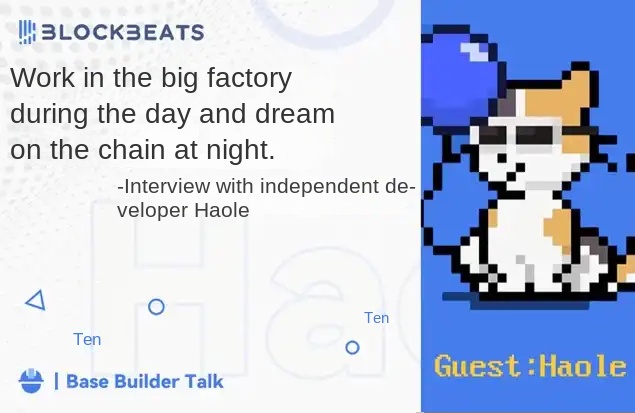Eigenlayer's economic model failed?
Original author: @ChainLinkGod
Original translation: Peisen, BlockBeats
Editor's note:
After studying the impasse between Eigenlayer node operators and users, the economic burden of AVS, and the technical challenges faced by oracles, @ChainLinkGod pointed out that the actual operation of the Eigenlayer economic model exposed a series of deep-seated problems and did not provide a real solution to launch a new decentralized infrastructure protocol.
There is a problem with Eigenlayer's economic model
The protocol does not provide a real solution to launch a new decentralized infrastructure protocol.
The launch problem is a classic “chicken and egg” problem, as follows:
(1) Node operators will not join and secure the network unless it is profitable for them to do so.
(2) Users will not pay to use the network unless there is already a set of node operators securing it.
Thus, there is a stalemate in which the existence of supply and demand is mutually dependent.
This stalemate is resolved by issuing new tokens, subsidizing the supply side through token inflation to ensure that node joining is profitable—even before the network itself is profitable.
Then, if the network provides a valuable service and adoption increases on the demand side, the growth in user fees will eventually replace the subsidy, making the network net profitable.
The protocol (AVS) launched on Eigenlayer still needs to be launched in exactly the same way, but the characteristics of Eigenlayer make the problem even more serious:
(1) AVS gives up the utility of the token because its natively issued token is no longer the only staked/collateralized asset, but instead the staked ETH/EIGEN.
(2) Since AVS is not profitable in its early stages, they must pay for the staked ETH/EIGEN through inflation of their own token supply - participants lack consistency in the AVS token and may sell it to accumulate more ETH/EIGEN.
(3) For any AVS to succeed, they will need to cede revenue to ETH/EIGEN stakers, creating a net drain on the protocol as revenue flows out of its ecosystem.
This arrangement does not make sense for well-funded or well-positioned projects that do not need to dilute the utility and value of their tokens to attract capital and validators.
Any AVS that succeeds and generates revenue will likely decouple from Eigenlayer to retain more of its own revenue and accrue more value to its native token, just as many dApps become their own L2/L3/appChain to capture more fees/MEV.
A protocol will only want to become and remain an AVS if: (1) its costs are subsidized via EIGEN token inflation, (2) it receives VC funding based on re-staking hype, or (3) it benefits from a narrative shift similar to the failed L1 to L2 transition.
Beyond the economics, being an AVS does not mean that users will receive higher quality services or better security guarantees.
For oracles in particular, we can see three main challenges:
(1) DevOps: Are node operators well-known, reliable entities capable of managing high-performance and interference-resistant infrastructure? Can their infrastructure scale to thousands of data sources and maintain low latency under extreme blockchain network congestion and adversarial P2P network conditions? Can operators identify and resolve issues in a timely manner?
(2) Data quality: Do operators aggregate data only from high-quality data providers with strict accuracy/availability guarantees? Does the data aggregation method reflect the volume/liquidity-weighted market price of the asset during extreme market volatility? Can network participants identify and resolve data provision issues in a timely manner?
(3) Code quality: Is the on-chain and off-chain code resistant to manipulation and vulnerabilities? Are there adequate third-party audits/reviews, and if vulnerabilities arise, how quickly can they be identified and resolved?
Eigenlayer does not provide any solutions, so even if an oracle AVS has a large amount of staked ETH/EIGEN, this does not guarantee the reliability, accuracy, or performance of that oracle.
To date, there have been no economic attacks on oracles or bridges, as the staked collateral is just an additional layer of security (which the protocol can more efficiently self-provide).
Eigenlayer’s transition to supporting AVS tokens as a re-collateralized asset is effectively an admission that Eigen’s core economic model has issues and has never been justified, and they themselves are trying to find returns on their $12 billion in collateralized assets.
Eigenlayer will remain a subsidized yield pool for ETH stakers for the foreseeable future.
Original link
Welcome to join the official BlockBeats community:
Telegram Subscription Group: https://t.me/theblockbeats
Telegram Discussion Group: https://t.me/BlockBeats_App
Official Twitter Account: https://twitter.com/BlockBeatsAsia
 Forum
Forum OPRR
OPRR Finance
Finance
 Specials
Specials
 On-chain Eco
On-chain Eco
 Entry
Entry
 Podcasts
Podcasts
 Data
Data


 Summarized by AI
Summarized by AI







